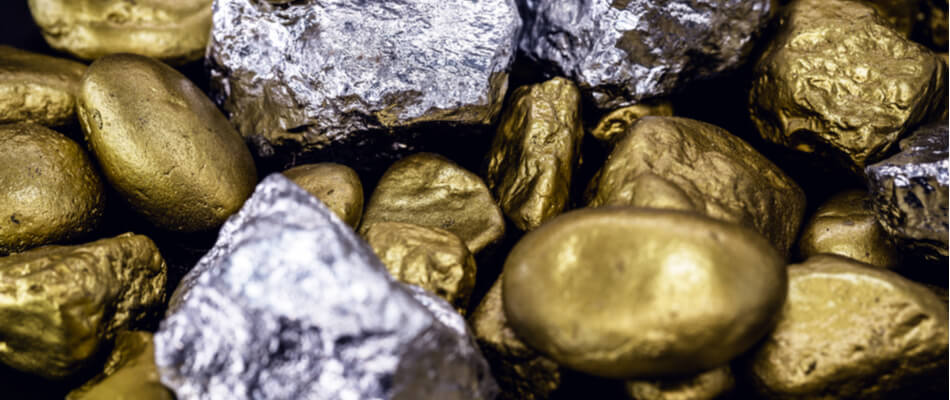Investing in gold
To invest in gold , you can use various financial products that are influenced by the gold price. In addition, you can purchase physical gold or make an investment in mining. What is most suitable for you as an investor is partly determined by your specific wishes and possibilities.
A distinction can be made between the following investments:
- Physical gold
- ETF’s (Exchange Traded Funds)
- Futures and Options
- Stocks gold mining
- Gold Certificates
- Gold oriented funds
- Structured financial products
The influence of the gold price can vary greatly here. We will discuss the various investment opportunities related to gold and discuss the differences.
Gold coins and gold bars or physical gold
Where gold coins used to be used as a valid means of payment, they are now mainly used for investment purposes. There is a great demand for the possibility of investing in physical gold as a counterbalance to the existing financial system. Gold coins are exempt from VAT within the European Union and also in many other countries. You can choose from many types of gold coins and gold bars. Various governments issue gold coins and certified smelters are responsible for issuing gold bars.
Gold coins are given a nominal value in the country of issue and are therefore considered legal tender. The weight of a gold coin determines its value and can range from 1/20 ounce to 1 kg, with the troy ounce (31.1 grams) being the most common.
ETF’s (Exchange Traded Funds)
Gold ETFs are also referred to as Gold Backed Exchange Traded Funds. These are index funds, or ETCs (Exchange Traded Commodities), that are traded on stock exchanges worldwide.
Gold ETFs are financial products that give investors the opportunity to profit from fluctuations in the gold price without having to buy physical gold. The underlying gold stock market index is leading for the price of an ETF.
These investment products are backed by physical gold stored in secure vaults. There is no direct delivery of gold. ETFs also guarantee relatively safe participation in the gold market. For a number of investors, however, this solid way of investing is not attractive enough.
Gold Futures
Gold futures are contracts for the delivery of a certain amount of gold with a certain purity, on a predetermined date and at an agreed price. The leverage effect can ensure that large profits, but also large losses can be achieved. This is because the amount with which leverage is traded, is a multiplication of the deposit and that entails the necessary risks.
CME Globex is the largest exchange that trades futures contracts. CME Globex was formed by a merger of the New York Mercantile Exchange and NYMEX.
Gold Options
With gold options, an investor obtains the right to buy (call option) or sell (put option) a certain amount of gold with a certain gold content at a previously agreed price and on a fixed date. The price of such an option depends, among other things, on the current gold price, the expiration date and the agreed price (strike price). It is therefore a right that can be exercised and not an obligation to purchase.
A high gold price results in an expensive call option and a low price for a put option. As with futures, leverage can also play a role here. An advantage is that an option does not have to be exercised if the strike price is not reached. The loss that the holder of an option has to take can then be limited to paying the premium for the option in question.

Investments in gold mines
With gold mining shares , you ensure that the results achieved are related to the gold price. Gold mining is a large business sector. More than 300 gold mining companies are listed on the American stock exchanges. The gold price is leading for the price of gold mining shares, because the gold that is mined by these companies is extremely valuable.
Gold Certificates
A gold certificate is a guarantee for a quantity of gold at a bank. With the help of gold certificates, investments in gold can be made without the need for delivery of physical gold. The advantage is that an investor does not have to make any additional insurance costs or storage costs. A gold certificate can also easily be sold by telephone. Gold certificates are issued by private banks in Switzerland and Germany.
Gold oriented funds
There are funds that make specific investments that are influenced by the gold price. The structure of the different funds is not always the same. There are funds that focus primarily on gold mining shares, while other funds concentrate more on holdings in the underlying metal, i.e. gold. There are also funds that offer a mix of products.
Forwards
These are structured financial products. Forwards are contracts just like futures. In a forward contract it is determined that an underlying asset is delivered, at a pre-agreed price and at a certain time. Forwards are often used to manage risks or to speculate on them.
Forwards differ from futures in that forwards involve more customization and futures are more standard. In forwards, the futures contract is first negotiated. This means that forwards, unlike futures, cannot be freely offered for sale on trading days.
Gold related bonds
Gold-linked bonds are also structured financial products. You can buy these bonds from the larger precious metal dealers and investment banks. Characteristics of gold-linked bonds are the direct link to fluctuations in the gold price, a guaranteed return and a guarantee of preservation of the principal.
The two structured products discussed above require a large minimum investment. Trading in forwards and gold-related bonds is therefore mainly done by institutional investors.
Compare brokers and start investing in commodities
Are you excited about investing in commodities, such as gold, after reading this article? Compare brokers where you can trade in commodities and find the broker that suits you best!